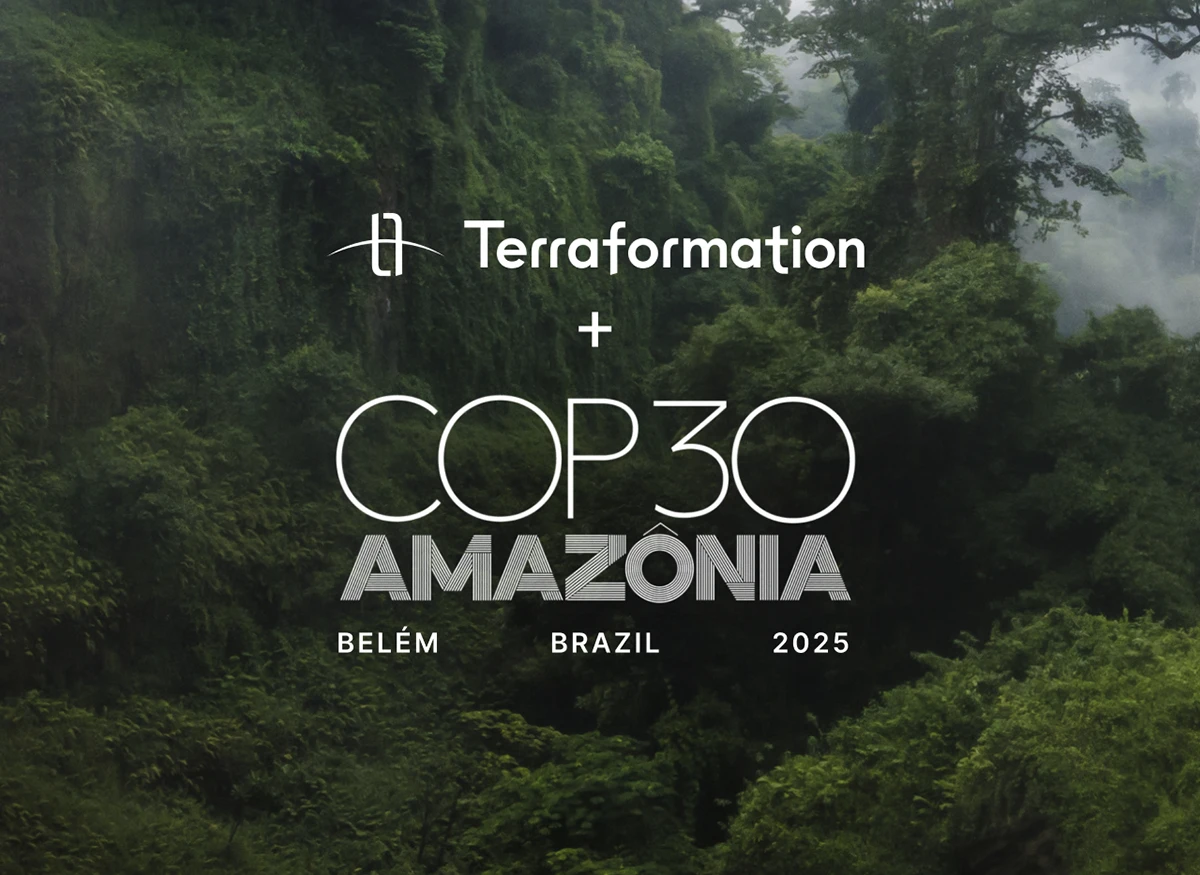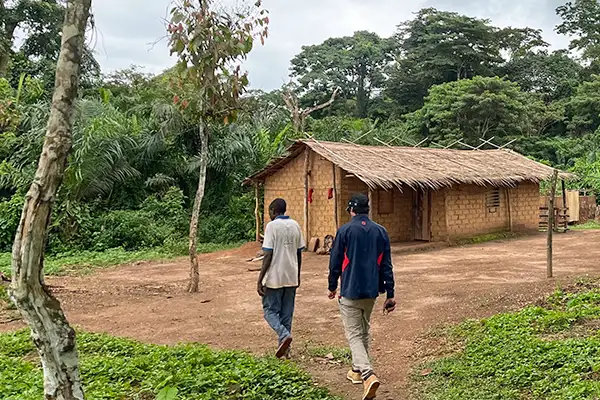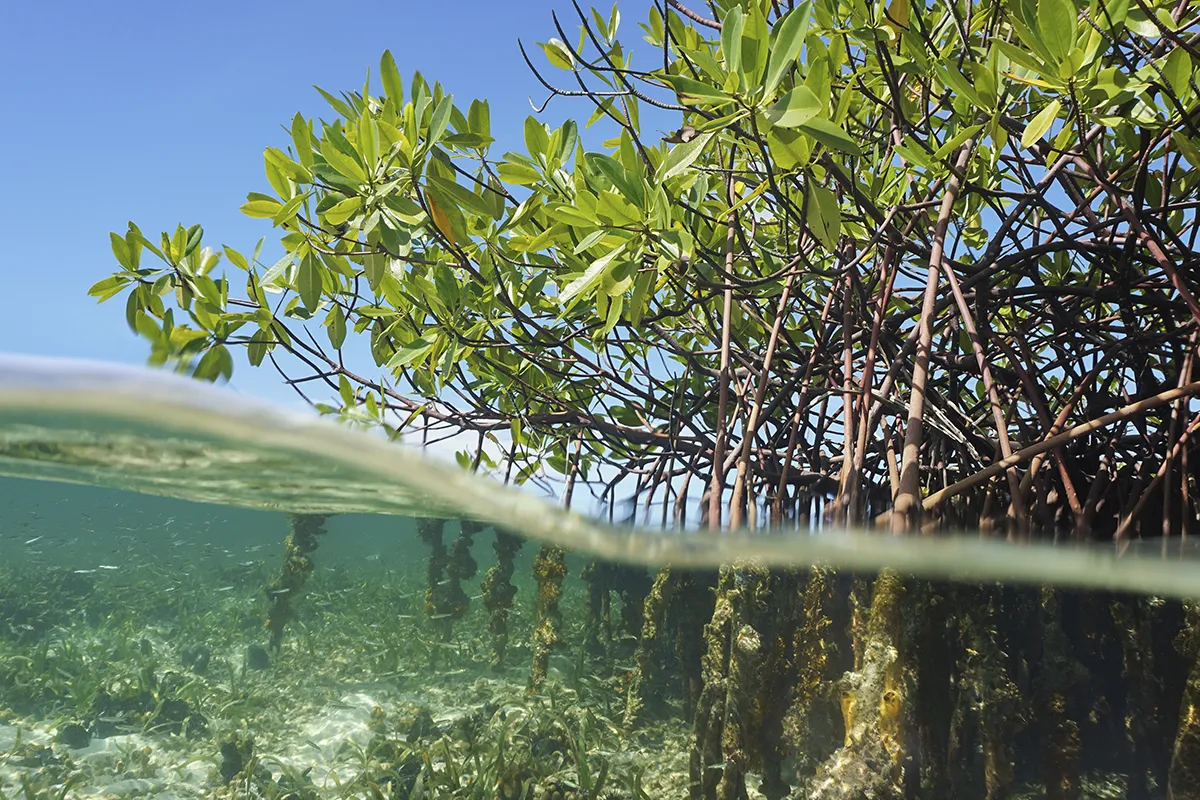How We Measure the Carbon Capture Potential of Forests

In our new series, Terraformation’s Carbon Scientist Dr. Victoria Meyer answers the biggest questions about measuring forest carbon capture and climate change.
September’s IPCC report highlights the importance of immediate climate action. The best place to start: reducing greenhouse gas concentrations, including carbon dioxide (CO2) in the atmosphere.
There are two ways to reduce CO2 atmospheric concentrations. The first is to actively slash our CO2 emissions (which come from burning fossil fuels for energy, agriculture, and transportation, land-use changes like deforestation, and more). The second is to capture carbon by sucking it back out of the atmosphere. We need to focus on both solutions if we want to see a real change.
At Terraformation, we focus on the latter by planting native forests around the globe. Native forest restoration is the most efficient and cost-effective carbon capture solution available. In order to accurately assess the current situation — and measure our progress — we need to be able to quantify the amount of CO2 sequestered in existing and future planted forests.
How do trees capture carbon?
Much of the carbon stored in a forest is located in its trees. Trees need water, light, and oxygen to function and grow. Photosynthesis is the process by which trees use light to turn CO2 and water (H2O) into carbohydrates, or sugar, and then release oxygen (O2) back into the atmosphere.
Trees then use carbohydrates as food to fuel growth and other functions, just as we do as humans. The bigger the tree, the more carbon it stores. Reestablishing a thriving forest ecosystem, full of diverse species native to the area, captures the most carbon of any forest restoration method.
How do we measure the weight, or biomass, of a tree?
To measure how much carbon is stored in a tree, we first need to figure out what its weight, or biomass, is. Biomass is the organic material of living organisms, and about half of it is carbon (C). When it comes to trees, we usually refer to their dry biomass, after the water has evaporated.
The only way to accurately measure a tree’s biomass is to cut it down, dry it, put it on a scale, and record the total weight of its parts — its trunk, branches, leaves, and roots.

The goal is to gather just enough information (i.e., cut down as few trees as possible) that we are able to create accurate biomass estimation models for the rest of the trees. That’s what scientists have done in various forests around the world, providing invaluable information to the community. Today, it is possible to estimate forest biomass accurately by relying on these models.
To create these estimation models, we relate biomass weight to simple measurements of tree size that we can take without harming a tree, such as its diameter and height. Wood density, which varies by tree species, is also an important factor: if you take two trees of the exact same volume, the one with the higher wood density will have more biomass.
Models relating these physical attributes to biomass are called allometric equations and have proven very effective. In the tropics, these biomass estimations leave an uncertainty of around 15%–20%. That’s the price to pay to go from measuring biomass (by cutting down trees) to estimating biomass (with a model). Most allometric models provide estimates of the aboveground biomass of trees.
The method for estimating a tree’s biomass is illustrated below.

It is difficult to collect data about tree root sizes without disturbing and hurting a tree. Most of the time, scientists estimate root biomass using a ratio that compares the belowground mass of a tree to what’s visible above ground. This is called the “root to shoot” ratio.
Belowground biomass can vary between 20% and 50% of aboveground biomass, depending on the species and biome. Scientists commonly estimate that a tree’s belowground biomass is approximately 25% of its aboveground biomass.
Total biomass is then calculated as the sum of aboveground and belowground biomass.
How much carbon dioxide can trees capture?
Every carbon atom stored in a tree removes one molecule of CO2 from the atmosphere. Since half of dry biomass is carbon, once we know a tree’s total biomass, we can calculate the equivalent amount of CO2 captured by the tree. CO2 capture is the ultimate measure of progress towards our goal of removing this greenhouse gas from the atmosphere at scale.
To make the conversion from carbon to equivalent CO2 removed from the atmosphere, we need a simple ratio. Each CO2 molecule has a total atomic mass of 44. We derive that number from the mass of the atoms in CO2: one carbon (C) atom, with an atomic mass of 12, and two oxygen (O) atoms, each with an atomic mass of 16.
Knowing these numbers, we can derive the ratio of carbon to CO2, as 12:44. Put another way, each gram of carbon stored in a tree is equivalent to 3.67 g of CO2 removed from the atmosphere.
For instance, General Sherman, the famous sequoia known as the largest tree on Earth, has trapped approximately the equivalent of 1400 tons of CO2 from the atmosphere over its lifetime.
An average American produces around 20 tons of CO2 per year — which means that General Sherman’s carbon removal is equivalent to a person’s lifetime’s CO2 emissions!
Do we have to measure all trees on Earth to know how much carbon forests sequester?
Ideally, we would measure all trees on Earth to know exactly how much carbon forests sequester. But this is of course impossible.
Scientists instead rely on measurements from a sampling of trees, typically in randomly located plots, to estimate carbon in entire forests. The number of plots needs to be large enough to be statistically representative of the forest, ensuring we get an accurate picture of what is going on. A forest that has a very uniform structure, with similar trees of the same age, will need fewer plots than a forest that presents areas of old-growth and secondary forest.
Once the carbon estimators have decided on the number of plots and their locations, it’s time to collect data! Within each plot, data collectors gather information such as diameter at breast height, total tree height, crown size, and species. These measurements are then used to estimate the total biomass in the plot using allometric equations. The biomass density of the whole forest is then estimated by taking the average of all the plots.
This estimation process is currently used to verify carbon credits, which can provide an important source of revenue for landowners who contribute to protecting and planting forests.
It can also yield general estimates of carbon by forest type. We know that tropical forests in Africa, for instance, hold an average of 260 tons of aboveground biomass per hectare, which is the equivalent of 480 tons of CO2 per hectare.
How can we measure carbon in forests quickly, and at a low cost?
Estimating carbon in forests based on field measurements yields accurate results, but it’s costly and time-consuming.
Fortunately, the last two decades have seen increasing use of information from remote sensing tools to complement field measurements, especially in large study areas, and reduce the manual labor required for forest carbon estimation.
Light Detection and Ranging (known as Lidar) is a high-resolution remote sensing technology that provides information about the structure of the forest. Lidar data typically looks like a 3D point cloud, from which valuable information, including the mean height of a forest, can be determined.
Combining field measurements and Lidar data is both a more accurate and a cheaper way to monitor forest carbon than relying on field data only in large study areas. Terraformation is working on acquiring our own Lidar instrument to monitor the growing number of trees we’re planting across the globe.
The first step to fighting climate change: knowing where to begin. Whether through natural or assisted regeneration of native forests, determining how much carbon is stored in forests — and how much will be added to the system in the decades to come — is the key to successfully leveraging forest carbon capture as a climate solution.
Want to get involved?
Learn more about how forests capture carbon in this video written and narrated by Dr. Victoria Meyer.
Methods:
We used the following conversion for the African tropical forest estimation above:
260 tons AGB/ha * (0.5 tons C/ton AGB) *(3.67 tons CO2/ton C) = 480 tons CO2/ha.
To convert this figure to CO2/acre, multiply by 0.404 ac/ha, for an average of 190 tons CO2/ac in the above ground biomass in moist deciduous forests in Africa.
















